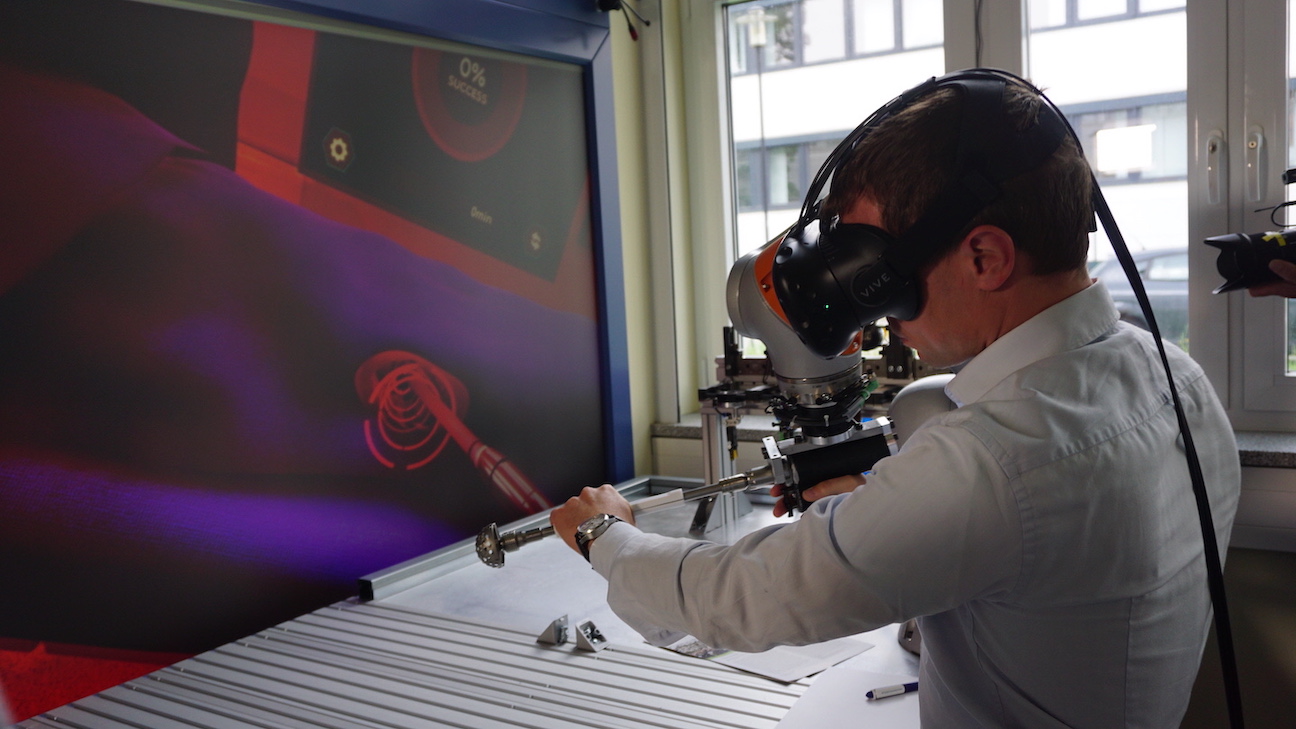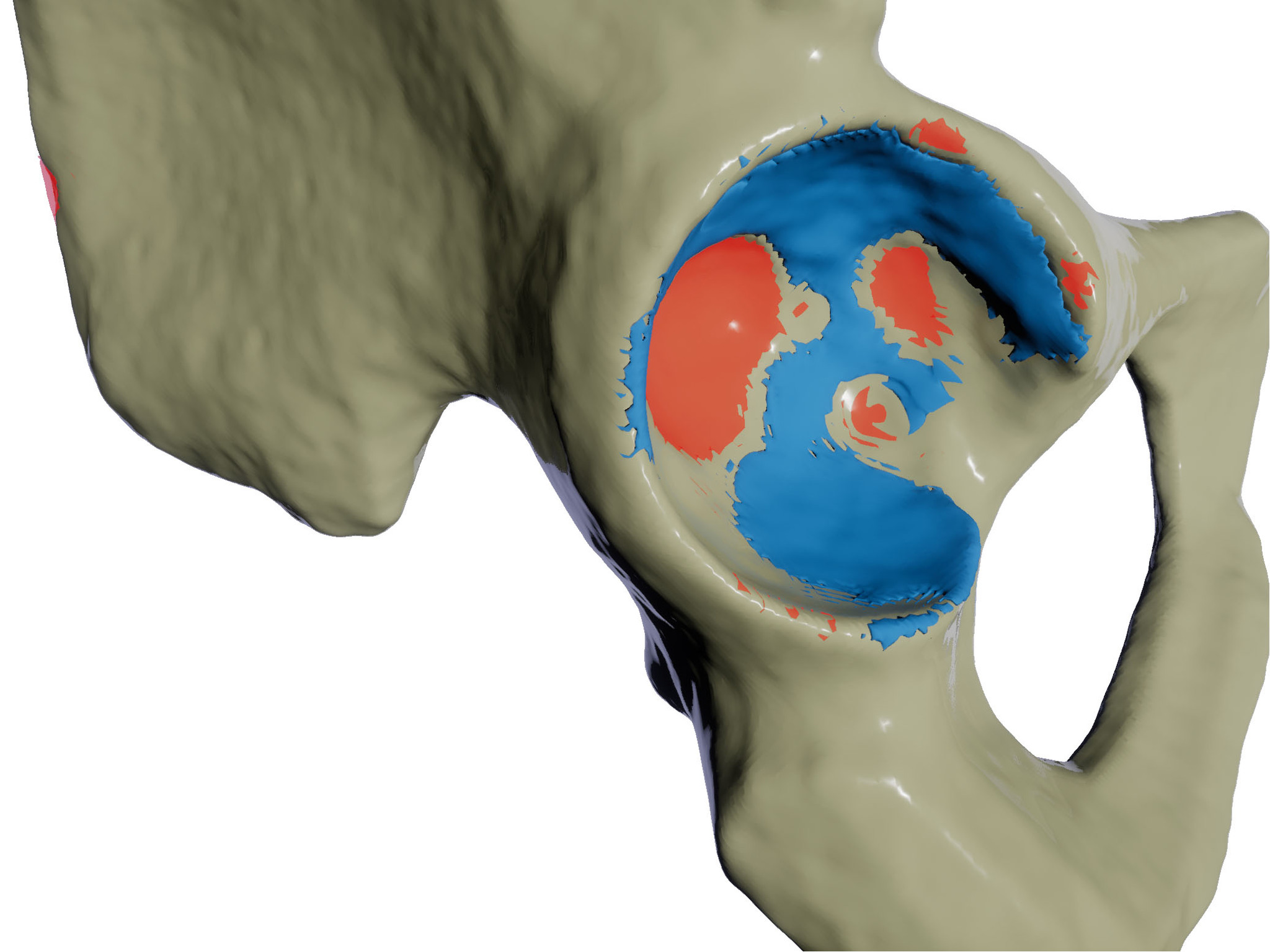
© Viktoria Stoiser
Virtual Reality Surgery Training
Doctors can train the implementation of hip implants using a simulator
The insertion of hip implants poses a particular challenge to surgeons: How high must the pressure be when the hip implant is manually scraped out? How does one separate the femoral head? Doctors must initially develop a feeling for these critical surgery steps. In the future, a dynamic hip implant simulator, which has been developed jointly by the University of Bremen and Chemnitz University of Technology, will help them to do so.
The device being developed as part of the Dynamic HIPS project is to realistically simulate the surgery steps. Three particularly critical phases form the main focus: the separation of the femoral head, the scraping out of the thighbone, and the implantation of the artificial joint. The simulation using a robotic arm takes place within virtual reality yet provides haptic feedback at the same time.
First impressions can be gained from the video profile of the previous device:
© CAT Production GmbH, Munich
“The system allows prospective surgeons to gain significant experience before their first real operation.”
Professor Gabriel Zachmann from the Center for Computing Technologies (TZI) at the University of Bremen says: “The system allows prospective surgeons to gain significant experience before their first real operation. Experienced surgeons also benefit from this training simulator because they can prepare for complicated, rarely performed procedures.”
Determine the forces during the surgical steps
The aim of the Dynamic HIPS project is to determine the forces, torques, and speeds that occur during the surgical steps. Additionally, a mathematical model that simulates the resistances and material removal on the bone is to be developed. This information will then be translated into the most realistic scenario possible within the simulation.
“Up to now there has been a lack of training equipment that can give surgeons exactly the same sensory perceptions that they would feel during a real operation, such as the resistance of the bone during sawing and scraping,” says Mario Lorenz, Chair of Machine Tool Design and Forming Technology at Chemnitz University of Technology.

© Maximilian Kaluschke
Remote Training Possible Across the World
With the help of a multi-user system, surgeons can participate in simulations regardless of their location. This functionality not only facilitates the transfer of knowledge to emerging and developing countries but also serves the exchange of knowledge between experienced surgeons. Surgeons are involved in developing the system in order to ensure it is as user-focused as possible. The final project phase will also include a comprehensive user study.